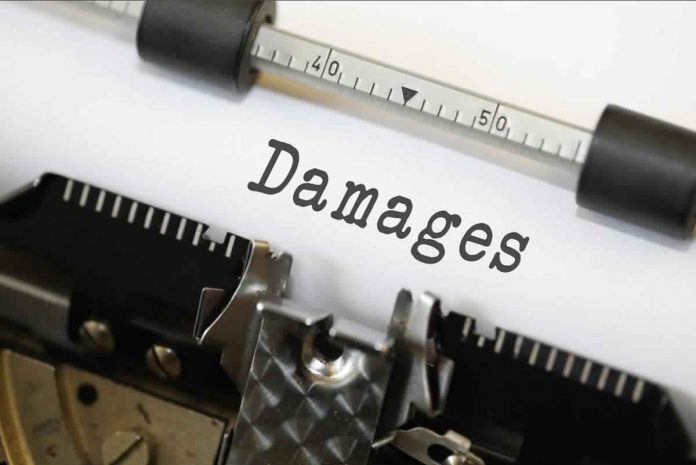This article is written by Riya Yadav from Pranveer Singh Institute of Technology College of Law, Kanpur. This is an exhaustive article which deals with the liability for damages caused by handling hazardous wastes.
Table of Contents
Introduction
For the proper handling or management of hazardous waste in the environment, the Government of India (GOI) introduced the Hazardous Wastes (Management and Handling) Rules, 1989. However, these rules were suppressed with notification of the Hazardous Wastes (Management, Handling and Transboundary Movement) Rules, 2008. The 2008 Rules were further amended by the Hazardous Wastes (Management, Handling and Transboundary Movement) Rules, 2016. According to Rule 17 of the 2016 Rules, hazardous waste refers to the kind of waste whose physical, chemical, reactive, toxic, flammable explosive or abrasive characteristics cause danger to health or environment, whether alone or when in-tuned with other wastes or substances, and shall include wastes as laid come in schedules of the principles.
Application of strict liability in the current system
The Environment (Protection) Act, 1986 governs the liability for damages caused by the handling of hazardous wastes. For example, to protect the air by removing trace metals from a flue gas only to transfer these contaminants to land through improper solid waste management practices, the Act provides liability rules for a spread of costs from certain kinds of pollution incidents. However, it is the foundation of strict liability within the common law doctrine. While considerable debate remains for individual decisions, strict liability appears to be accepted by the courts in cases of abnormally dangerous conditions or activities. Key factors in adjudicating if an activity is ‘abnormally dangerous’, and the corrosiveness which may result, is whether society should expect complete protection from such risk and whether the activity is an appropriate or uncommon practice for the situation within which it occurs. Thus as an example, day to day emissions of sulphur dioxide from the influenced plant, although hazardous, wouldn’t be the common law doctrine of strict liability since they are the traditional part of operations unavoidable under common practices and are appropriate for his or her location during a properly located power station.
On the other hand, a spill of rare toxic materials is ordinary and thus would fall within the strict liability guidelines. There does, however, seem to be some movement by the courts towards imposing strict liability altogether in cases of particular danger, whether normal or otherwise, with the reasoning that a private engaged in an exceedingly dangerous activity should bear the worth of that danger. Hence, under common law doctrine, strict liability tends to be upheld for incidents like spills of hazardous substances. Given the philosophical underpinnings of strict liability within common law, it’s not surprising that the current environmental legislation provides strict liability for hazardous pollution accidents. The remainder of this section will briefly review liability rules provided by several pieces of environmental legislation, and also explain why the application of the doctrine of strict liability for the damages so caused is not viable anymore.
Need for the law for controlling hazardous wastes
The Ministry of Environment, Forests and Climate Change, in 2006, published the National Environmental Policy; this policy is supposed to guide the controlling of hazardous waste. The main principle of this policy is a legal liability which specifies that civil liability would deter environmentally harmful actions and compensate the sufferer for environmental damages.
Section 9 of the Environment Protection Act, 1986, stipulates provisions about the furnishing of data to authorities and agencies, as well as remedial measures where the discharge of any pollutant over the prescribed standards occurs or is apprehended to occur due to an accident or other unforeseen act or event. The identical is reproduced as below:
- Where the release of any environmental pollutant over the prescribed standard takes place or is apprehended to arise due to a twist of fate or different unexpected act or event, and for that reason the individual accounts of the region at which such discharge takes place or is apprehended to arise shall additionally forthwith intimate the reality of such incidence of apprehension of such incidence; and be bound if known as upon, to render all assistance.
- On receipt of records concerning the reality or apprehension on any incidence of the person stated in sub-section(1) of Section 9, whether or not through intimation to thereunder sub-segment or otherwise, the government or companies stated in sub-section (1) shall, as early as practicable, move to execute such remedial measures to be taken as important to save the sufferer or mitigate environmentally.
- The charges, if any, incurred with the aid of using any authority or organization regarding remedial measures stated in sub-section (2), along with interest from the date while the call for the charges is made till it is paid, can also be recovered with the aid of using such authority or organization from the individual involved as arrears of land sales or a public call for.
- In exercising powers conferred under Section 6 and Section 25 of the Environment Protection Act, 1986, the authorities of India have notified Environment Protection Rules, 1986. Rule 12 of the stated policies and modification made thereof lays down aforesaid government who will be intimated approximately the stated prevalence or apprehension. The stated provisions are:
- Where the release of an environmental pollutant is in the manner of the prescribed requirements takes place or is apprehended to arise due to a twist of fate or a different unexpected act or event, the individual responsibility of an area at which such discharge takes place or is apprehended to arise shall forthwith intimate the act of such prevalence or apprehension of such prevalence to any or all of the subsequent government or businesses
- The officer-in-charge of emergency or catastrophe alleviation operation in an exceeding district or some other location of a state or union territory by way of means of something designation or by way of means of the authorities of the state or union territory, and in whose jurisdiction the industry processes.
Central board or state board due to the fact the case ought to also be and its local officials having nearby jurisdiction who’ve delegated powers beneath under Section 20, 21, and 23 of the Water (Prevention and Control of Pollution) Act, 1974 and Section 24 of the Air (Prevention and Control of Pollution) Act, 1987.
The Hazardous Wastes ( Management, Handling, And Transboundary Movement) Policies, 2008, has been notified by the authorities of India in exercising the powers conferred by Sections 6, 8, and 25 of the Environment (Protection) Act, 1986. Besides laying down provisions for managing and control of hazardous waste, it additionally stipulates the delivery of twist of fate reporting and legal responsibility of occupier, transporter, operator of a facility, and importer in regards to damages brought about to the surroundings by way of means of 1/3 events because of incorrect managing of risky wastes. The accessibility of the economic penalty for any violation of the provisions beneath the rules has additionally been stipulated, the same is reproduced as below:
Accident reporting and compliance
- Wherein a twist of change takes place on the electricity or risky waste substances or at some stage in the transportation of the risky waste, the occupier or operator of the electricity or the transporter due to the fact the case is additionally, shall record straight away to the state pollutants panel approximately about the accidents in Form V Rule 14.
Liability of occupier, transporter, operator of a facility, and importer
The occupier, transporter, importer, and operator of the electricity will be accountable for all damages brought about to the surroundings of a third party due to incorrect management or disposal of the risky wastes.
The occupier and the operator of the electricity will be at risk of paying economic consequences as levied for any violation of the provisions beneath those policies through the state pollutants manipulate panel with the earlier approval of the relevant pollutants which manipulate panel. The concept of sustainable development, the precautionary precept, and as a consequence, the polluter can pay precept are implemented for passing any order or choice or by way of means of the tribunal.
The National Green Tribunal Act 2010 lays down provisions for remedy, reimbursement, restitution, and legal responsibility in Section 15 and Section 17, and which is given below:
- The tribunal may also, by way of means of an order, offer:-
- Relief and reimbursement to the sufferers of pollutants and different environmental harm emerging below the enactments laid down in the schedule 1 (together with coincidence happening at the same time as dealing with any hazardous substance)
- For restitution of assets broken.
- For restitution of the surroundings for such areas.
- The remedy and reimbursement and restitution of assets and surroundings referred to in clauses (a), (b), and (c) of subsection (1) will be introduced to the comfort paid or payable under the Public Liability Insurance Act, 1991.
- No utility for furnish of any reimbursement or remedy or restitution of assets of surroundings below this segment will be entertained by way of means of the tribunal until it is made inside five years from the date on which the motive for such reimbursement or remedy arise so long as the tribunal may also if it is happy that the applicant changed into avoided by way of means of enough motive from submitting the equipment in the stated length, permit it to be filed inside a similar length now no longer exceeding sixty days.
- The tribunal may also have, related to the harm to public health, assets, and surroundings, divide the reimbursement or remedy payable laid down in Schedule 2 in order to provide reimbursement or remedy to the claimants and for restitution of the broken assets.
- Every claimant of the reimbursement or remedy under this Act shall intimate the tribunal approximately the equipment filed or due to the fact the case is additionally, competitor remedy acquired from the alternative court or authority.
Where the dying off, or harm to, an individual (aside from a workman) or harm to any assets or the surroundings has resulted from a coincidence or the unfavourable effect of a hobby or operation or manner, below any enactment in step with Schedule 1, the individual will be at hazard of pay such remedy or reimbursement for such death, injury, or damage, below any or all of the heads, laid down in Schedule 2, as can also be decided by way of means of the tribunal. If the death, harm, injury, or damage due to a coincidence or the unfavourable effect of any activity or operation or manner below any enactment laid down at Schedule 1 can’t be attributed to any particular activity or operation or manner, however, is that the blended or resultant impact of seven such activities, operations, and methods, the tribunal may also apportion the legal responsibility for remedy or reimbursement among the ones answerable for such activities, operations, and the methods on an equitable basis. The tribunal shall, simply in case of a coincidence, observe the precept of no-fault. The National Green Tribunal Act, 2010, has additional provisions of penalty for failure to conform with orders of the tribunal. Section 26 of the Act stipulates that whoever fails to comply with any order or award or selection suggestions for enforcing liabilities for environmental damages because of dealing with and disposal of hazardous waste and penalty of the tribunal below this Act, will be punishable with imprisonment for a period which may also extend to 3 years, or can be ten crore rupees, simply in case of failure or contravention. However, the payment or fine may also surpass twenty-five crore rupees and one lakh rupees day by day simply in case of regular default.
Thus, a regulatory framework exists within the country that needs a possible polluter to be responsible for all damages caused to the environment or third parties due to improper handling of hazardous wastes or disposal of the hazardous wastes. Further, provisions have also been laid down in respect of monetary penalties associated with improper handling or disposal of hazardous wastes.
What’s in the future
Chemical substances, produced either by means of commercial activities or in sort of hazardous waste, can cause excessive fitness impairment or perhaps loss of life if taken by people in huge amounts. On the other hand, there are chemical substances that can lead to destructive effects even in small doses. Some of the excessive fitness results which might also additionally arise to the populations uncovered to unsafe chemical substances like Genetic defects, Reproductive abnormalities and so on.
Over the years, certain vital enhancements were made over with growth in focus on approximately unsafe systems. Consequently, if we find out about managing or lowering unsafe materials or wastes manufacturing typically then there can be plenty of higher practices than seeking to get rid of the wastes properly. Yes, the significance of right unsafe waste management can not be harassed and prolonged enough. But lowering the amount of waste or, higher yet, getting rid of it might be the idealized solution. We desire for the higher, and as visible from here, interest in sustainability and green practices will now no longer be trendy; it will likely be the norm.
Goal for the future
The main aim that needs to be given effect in the near future is that of waste avoidance. Waste avoidance simply means avoiding the production of waste. It is also known as waste reduction or waste minimization. Minimization is at the top of the waste pecking order, and incompatible with the popular concept. It means depleting the amount of waste that is produced and can be attained simply. Slight changes of processes or changing procurement practices can enhance efficiencies in using resources and lead to major depletion in the quantity of waste produced. There is a need for introducing broadened guidelines that could cover the related objects, such as paper, IT equipment, or furniture.
Conclusion
As the times have changed, everything around us needs to change. It also applies to the work of managing hazardous wastes, including legal provisions and other processes. Except for a truthful and better eternal shift in impact, shareholders in waste management and municipalities have to enhance their systems with era solutions. To regulate the prevailing system more efficiently, there is a need to digitize waste management. Legal provisions governing it should also be amended in respect of the current scenario.
References
- https://www.indiacode.nic.in/bitstream/123456789/6196/1/the_environment_protection_act%2C1986.pdf
- vikaspedia.in/energy/policy-support/environment-1/forests/general-environmental-acts
- https://indiankanoon.org/doc/82542966/
- https://npcb.nagaland.gov.in/wp-content/uploads/2016/03/HWM-2008.pdf
Students of Lawsikho courses regularly produce writing assignments and work on practical exercises as a part of their coursework and develop themselves in real-life practical skills.
LawSikho has created a telegram group for exchanging legal knowledge, referrals, and various opportunities. You can click on this link and join:
https://t.me/joinchat/J_0YrBa4IBSHdpuTfQO_sA
Follow us on Instagram and subscribe to our YouTube channel for more amazing legal content.
 Serato DJ Crack 2025Serato DJ PRO Crack
Serato DJ Crack 2025Serato DJ PRO Crack











 Allow notifications
Allow notifications



